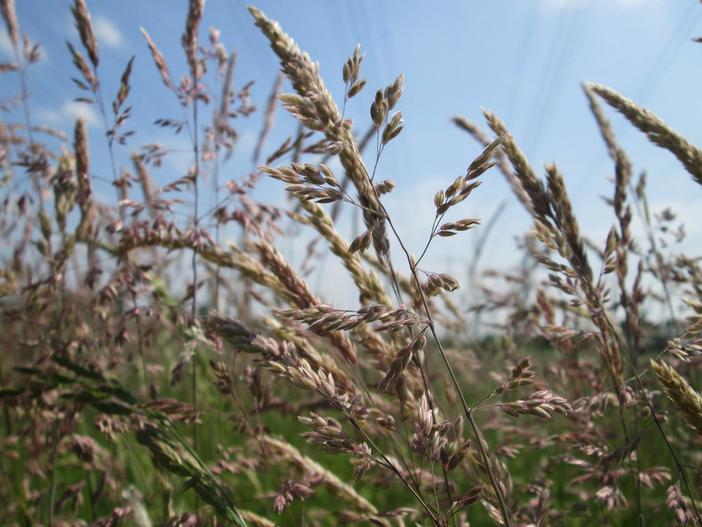Yorkshire Fog
(Holcus lanatus)
Yorkshire Fog (Holcus lanatus)
/
/

Andreas Rockstein
CC BY-SA 2.0
Image By:
Andreas Rockstein
Recorded By:
Copyright:
CC BY-SA 2.0
Copyright Notice:
Photo by: Andreas Rockstein | License Type: CC BY-SA 2.0 | License URL: https://creativecommons.org/licenses/by-sa/2.0/ | Uploader: anro0002 | Publisher: Flickr














































Estimated Native Range
Summary
Holcus lanatus, commonly known as Yorkshire fog, is a perennial grass native to open grasslands, meadows, and disturbed sites across Europe. It typically grows up to 2 feet (60 cm) tall, with a tufted habit and velvety grey-green leaves. The stems are soft and can have a pinkish hue, especially at the nodes. Yorkshire fog produces airy panicles of silvery-pink flowers that bloom in early summer, adding a soft texture to the landscape. The flowers are not particularly showy but do contribute to the plant’s overall aesthetic.
Yorkshire fog is valued for its ability to thrive in poor soil conditions and its use as a forage grass, although its nutritional value is lower than that of other pasture grasses. It is also used for erosion control and as a ground cover in some garden settings due to its dense growth habit. In cultivation, it prefers full sun to partial shade and can tolerate a range of soil types, though it thrives in moist, well-drained soils. While it is low-maintenance, it can become problematic if allowed to spread unchecked, potentially becoming invasive outside its native range. Gardeners should be cautious and consider local regulations before planting.CC BY-SA 4.0
Yorkshire fog is valued for its ability to thrive in poor soil conditions and its use as a forage grass, although its nutritional value is lower than that of other pasture grasses. It is also used for erosion control and as a ground cover in some garden settings due to its dense growth habit. In cultivation, it prefers full sun to partial shade and can tolerate a range of soil types, though it thrives in moist, well-drained soils. While it is low-maintenance, it can become problematic if allowed to spread unchecked, potentially becoming invasive outside its native range. Gardeners should be cautious and consider local regulations before planting.CC BY-SA 4.0
Plant Description
- Plant Type: Grass
- Height: 1-1.7 feet
- Width: 0.25-0.5 feet
- Growth Rate: Moderate
- Flower Color: N/A
- Flowering Season: Spring, Summer
- Leaf Retention: Deciduous
Growth Requirements
- Sun: Full Sun, Part Shade
- Water: High
- Drainage: Fast, Medium
Common Uses
Erosion Control, Low Maintenance
Natural Habitat
native to open grasslands, meadows, and disturbed sites across Europe
Other Names
Common Names: Velvet Grass, Tufted Grass, Fog Grass, Houlque Laineuse, Soft-Meadow Grass, Yorkshire Fog
Scientific Names: , Holcus lanatus, Aira holcus-lanata, Aira lanata, Avena lanata, Avena lanata, Avena lanata, Avena pallida, Ginannia lanata, Ginannia pubescens
GBIF Accepted Name: